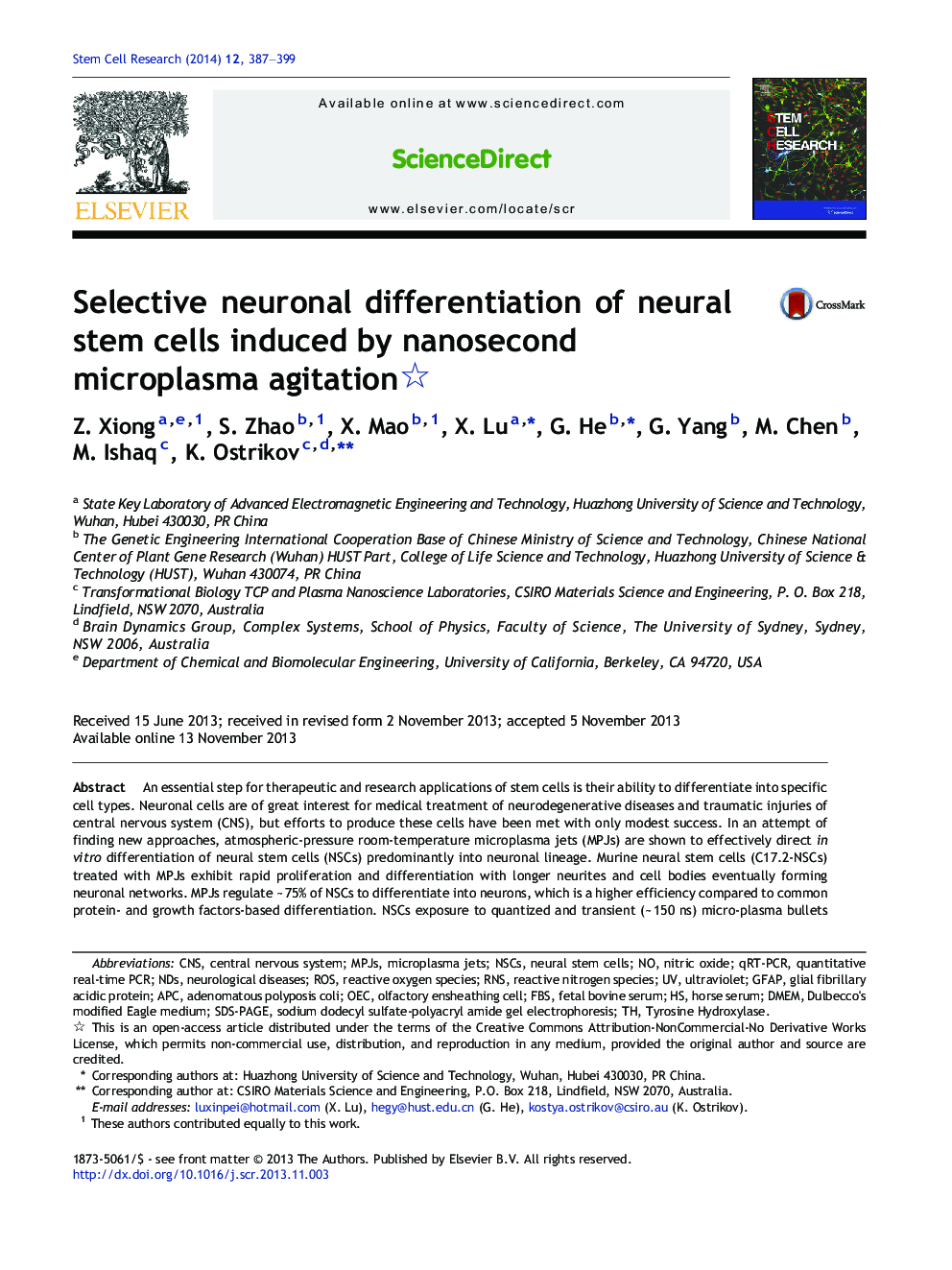| Article ID | Journal | Published Year | Pages | File Type |
|---|---|---|---|---|
| 2094553 | Stem Cell Research | 2014 | 13 Pages |
•Effective, simple, fast, safe, highly-selective neural stem cell differentiation•Novel stem cell agitation by nanosecond microplasma bullets•75% cells differentiate into neuronal lineage—much higher than by other methods•Beta-tubulin III and O4 neuronal markers upregulated•NO affects stem cell fate choice and differentiation followed by axonal growth.
An essential step for therapeutic and research applications of stem cells is their ability to differentiate into specific cell types. Neuronal cells are of great interest for medical treatment of neurodegenerative diseases and traumatic injuries of central nervous system (CNS), but efforts to produce these cells have been met with only modest success. In an attempt of finding new approaches, atmospheric-pressure room-temperature microplasma jets (MPJs) are shown to effectively direct in vitro differentiation of neural stem cells (NSCs) predominantly into neuronal lineage. Murine neural stem cells (C17.2-NSCs) treated with MPJs exhibit rapid proliferation and differentiation with longer neurites and cell bodies eventually forming neuronal networks. MPJs regulate ~ 75% of NSCs to differentiate into neurons, which is a higher efficiency compared to common protein- and growth factors-based differentiation. NSCs exposure to quantized and transient (~ 150 ns) micro-plasma bullets up-regulates expression of different cell lineage markers as β-Tubulin III (for neurons) and O4 (for oligodendrocytes), while the expression of GFAP (for astrocytes) remains unchanged, as evidenced by quantitative PCR, immunofluorescence microscopy and Western Blot assay. It is shown that the plasma-increased nitric oxide (NO) production is a factor in the fate choice and differentiation of NSCs followed by axonal growth. The differentiated NSC cells matured and produced mostly cholinergic and motor neuronal progeny. It is also demonstrated that exposure of primary rat NSCs to the microplasma leads to quite similar differentiation effects. This suggests that the observed effect may potentially be generic and applicable to other types of neural progenitor cells. The application of this new in vitro strategy to selectively differentiate NSCs into neurons represents a step towards reproducible and efficient production of the desired NSC derivatives.
Graphical abstractAtmospheric-pressure, room-temperature agitation by nanosecond microplasmas is demonstrated to selectively (~ 75%) direct in vitro differentiation of neural stem cells (NSC) into neuronal lineage. This is superior to common protein- and growth factors-based NSC differentiation and is promising for medical treatments of neurodegenerative diseases and traumatic injuries of central nervous system.Figure optionsDownload full-size imageDownload high-quality image (130 K)Download as PowerPoint slide
